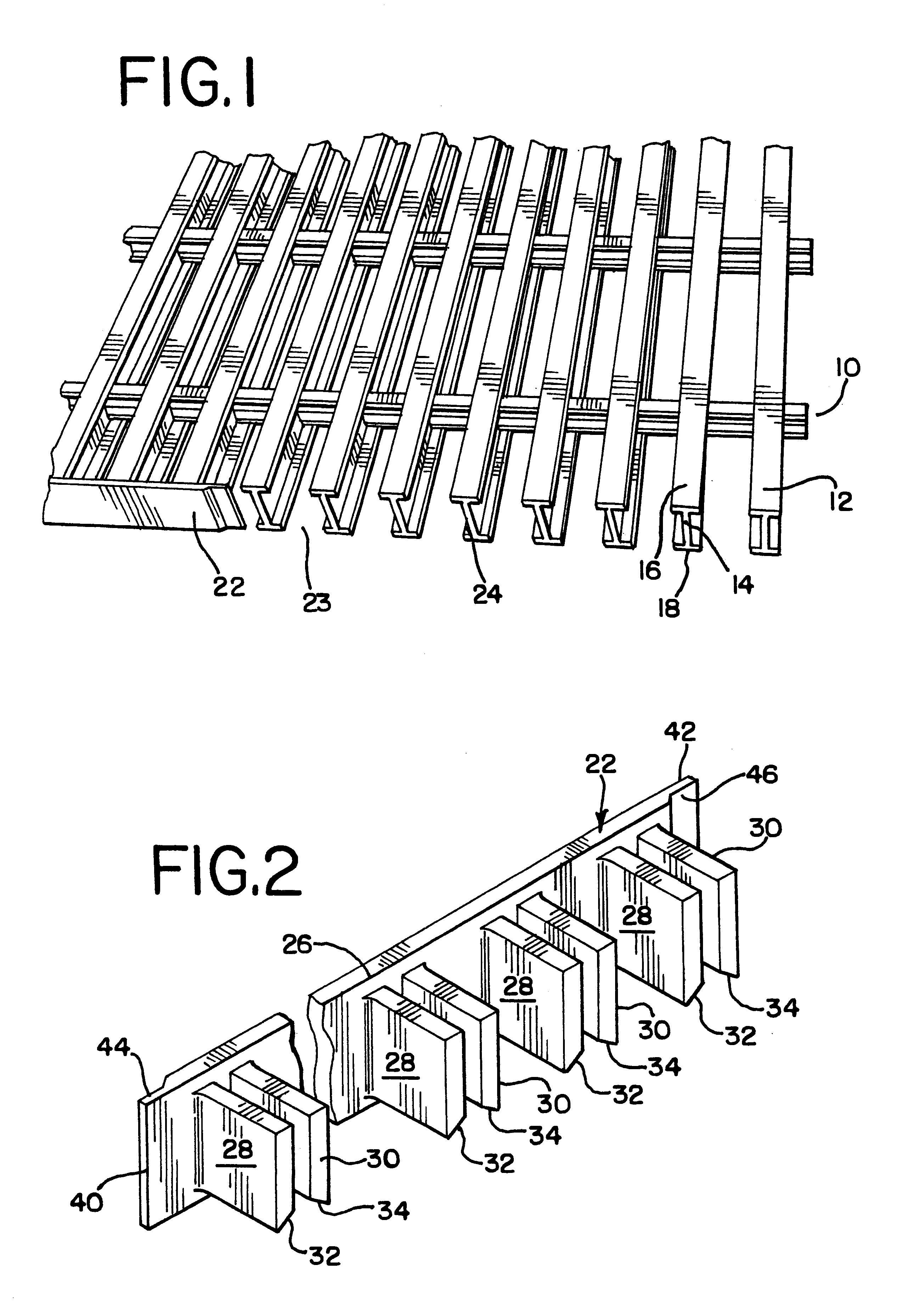Endcaps for fiberglass running boards
a running board and end cap technology, applied in the direction of building components, building reinforcements, constructions, etc., can solve the problems of affecting the strength of the cured resin that bonds the glass fibers together, the end of the beam constructed from the fiberglass rail can also form undesirable splinters and cracks, and the use of the fiberglass running board is limited, so as to improve the strength, economy and durability of such materials.
- Summary
- Abstract
- Description
- Claims
- Application Information
AI Technical Summary
Benefits of technology
Problems solved by technology
Method used
Image
Examples
Embodiment Construction
A typical running board 10 is shown in FIG. 1. The running board 10 is constructed from a plurality of deck beams 12. The beams 12 are arranged and connected in parallel fashion to form the running board 10. The beams 12 are typically made of steel and have an I-shaped cross section formed by a vertical web portion 14, a transversely oriented top flange 16 centered along the top edge of the vertical web portion 14, and a transversely oriented bottom flange 18 centered along the bottom edge of the vertical web portion 14, as shown in FIG. 1. Typically, the running board 10 is used on railcars (not shown) in the railroad industry, but may also be used on other vehicles such as semi-trailers, ships, drilling platforms or may be in industrial applications such as catwalks in manufacturing or like applications. The I-beam configuration of the beams 12 has the load bearing and weight reducing advantages well known of I-beams, with the additional advantage of providing spacing between the ...
PUM
 Login to View More
Login to View More Abstract
Description
Claims
Application Information
 Login to View More
Login to View More - R&D
- Intellectual Property
- Life Sciences
- Materials
- Tech Scout
- Unparalleled Data Quality
- Higher Quality Content
- 60% Fewer Hallucinations
Browse by: Latest US Patents, China's latest patents, Technical Efficacy Thesaurus, Application Domain, Technology Topic, Popular Technical Reports.
© 2025 PatSnap. All rights reserved.Legal|Privacy policy|Modern Slavery Act Transparency Statement|Sitemap|About US| Contact US: help@patsnap.com



